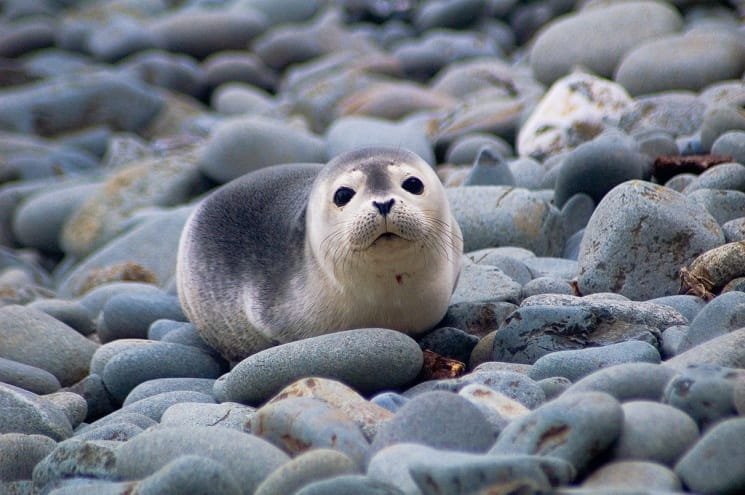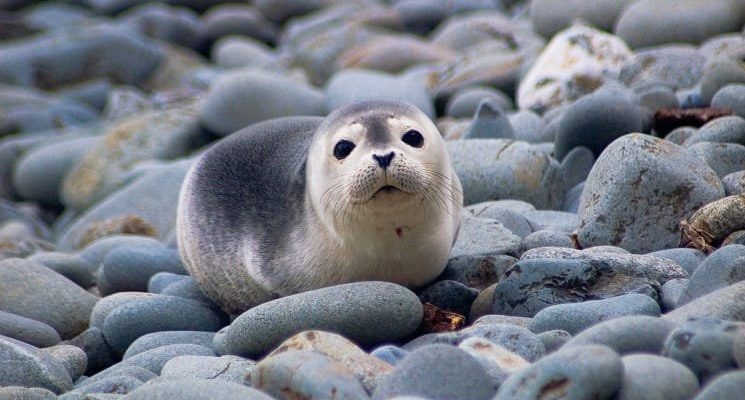
In this article, we’re diving deep into the unique adaptations of these fascinating marine mammals. You’ll discover how their physical traits and behaviors give them a competitive edge in the wild. So grab your favorite drink and let’s explore the underwater world of harbor seals together!
Sleek Bodies for Streamlined Swimming
Harbor seals are known for their sleek, torpedo-shaped bodies. This design is no accident! Just like a well-crafted kayak glides through the water, the harbor seal’s shape minimizes drag. Their bodies allow them to move swiftly and efficiently as they navigate through their underwater habitat.
You might notice that harbor seals don’t have the long, elegant flippers of sea lions. Instead, their front flippers are shorter but powerful, enabling quick bursts of speed when swimming away from predators or chasing after fish. Think of them as the perfect combination of a sprinter and a graceful dancer, effortlessly darting through the water while maintaining that all-important energy efficiency.
Moreover, their blubber layer, a thick fat cushion underneath their skin, acts as insulation against the cold temperatures of ocean waters. This not only helps them stay warm but also provides buoyancy. So, when you’re swimming in colder waters and shivering, just remember: harbor seals can handle it like pros!
Efficient Breathing and Diving Skills
One of the most fascinating adaptations of harbor seals is their remarkable breathing and diving abilities. Unlike humans, who can only hold their breath for a short time, harbor seals can dive for up to 30 minutes or longer while hunting for fish and crustaceans.
Their large lung capacity allows them to take in more air, which is crucial when they dive deep. When they do take a dive, they can slow their heart rate, conserving oxygen for essential organs like the heart and brain. Imagine your heart slowing down during a race—this is the seal’s way of making sure they have enough energy to come back up to the surface.
Additionally, harbor seals are equipped with specialized blood vessels that help store oxygen. These adaptations give them an edge while hunting and evading predators, allowing them to thrive even in the deep depths of the sea. The next time you see a seal pop up for air, think of the endurance race they just completed underwater!
Sensory Adaptations for Underwater Navigation
Have you ever wondered how harbor seals find their way in murky waters? It all boils down to their impressive sensory adaptations. Seals rely heavily on their whiskers—known as vibrissae—which are sensitive to touch and vibrations. These whiskers can pick up minute movements in the water, helping seals detect the presence of fish or even other seals nearby.
Their eyes are also perfectly adapted for underwater sight. With a unique lens shape, harbor seals can see clearly both above and below the water’s surface. This means they can spot a school of fish from a distance or spot potential threats while swimming. You might say they have the best of both worlds when it comes to their vision!
In a fun twist, harbor seals can also adjust their pupils to control how much light enters their eyes. When diving deeper and encountering darker areas, this adjustment helps them navigate more effectively, proving that nature has its own genius when it comes to adaptation.
Diet and Feeding Techniques
Let’s talk about food. Harbor seals are opportunistic feeders, which means they’ll eat whatever’s available. Their diet mainly consists of fish, but they’re also known to munch on squid and crustaceans. The seals’ ability to adapt their diet based on food availability helps them survive in changing ocean conditions.
When it comes to catching their dinner, harbor seals have some quirky feeding techniques. They often hunt alone but will sometimes work together in small groups to corral schools of fish. This cooperative behavior is a great example of how social interactions can play a role in survival.
You might also find them using their sensitive whiskers to detect fish hiding in the sand or murky waters. They can essentially “feel” their prey before they even see it. It’s like having built-in sonar, giving them an advantage over their slippery dinner.
Social Behavior and Communication
Harbor seals are social creatures, often found lounging in groups on rocky shores or sandy beaches. Their social interactions are vital for cooperative hunting, raising young, and general bonding. While they may seem quiet, seals have a range of vocalizations—like barks, growls, and even whistles. This communication helps keep their social structure intact, especially during mating season.
Each harbor seal has its own distinct voice, much like humans have unique accents. By vocalizing, they can express emotions or alert others to danger. Imagine being in a crowded room, where everyone is chatting but you can still recognize your closest friend’s voice. That’s how harbor seals navigate social situations!
Their strong social bonds extend to mothers and pups as well. Mother harbor seals are attentive, nursing their young and teaching them the ropes of life in the water. This nurturing behavior ensures the young ones grow up strong and ready to face the challenges of the ocean.
Critical Role in Ecosystem Health
Harbor seals might seem like cute marine mammals, but they play a crucial role in maintaining the health of their ecosystems. By keeping fish populations in check, they help maintain a balance that benefits other marine life.
As top predators, their feeding habits influence the populations of fish and other sea creatures. When harbor seals are thriving, it often indicates a healthy ocean environment. Conversely, if their numbers decline, it could signal problems within the ecosystem, such as overfishing or pollution.
This relationship is a reminder of how interconnected life is in the ocean. Just like every piece of a puzzle is important, every creature—from the tiniest plankton to the mighty harbor seal—has a role in maintaining the balance of marine ecosystems.
The adaptations of the harbor seal are quite remarkable, don’t you think? From their sleek bodies and diving abilities to their effective hunting techniques and social behaviors, every aspect plays a part in their survival. Understanding these features helps us appreciate not only the harbor seals themselves but also the overall health of the marine environments they inhabit.
As we reflect on these incredible adaptations, let’s remember that our oceans are treasures to protect. When you think about harbor seals next time, consider the intricate ways they thrive beneath the surface, showcasing nature’s brilliance. So, keep your eyes peeled on your next beach trip—you might just catch a glimpse of these underwater wonders!

